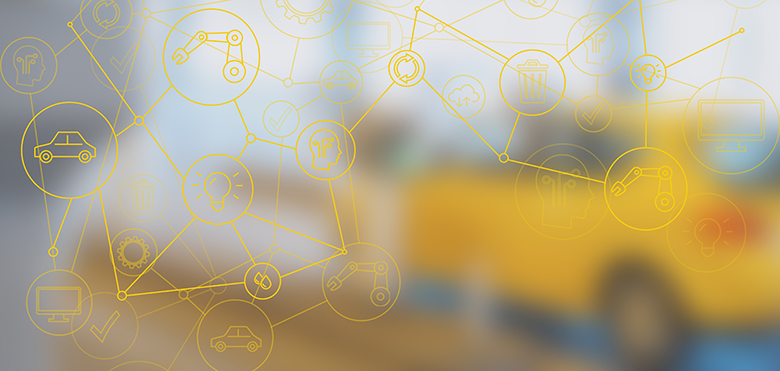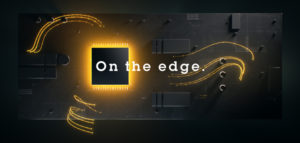Global Lighting and Electronics Specialist using AI to boost lean manufacturing at assembly lines

|
This post is written by Huri Mendoza, Global Director of Operational Excellence at Hella KGaA. Read more about Huri at the end. |
The competition is razor-sharp in the automotive industry, which is true throughout the value chain. Hella is a major supplier to this industry, so these conditions define the company’s daily operation. No wonder lean manufacturing is one of our top priorities. It means that they are always looking for technologies and tools to help them finetune their assembly line operation even further.
In this article, Huri Mendoza, Global Director of Operational Excellence, explains how An AI tool has helped Hella reduce cycle times and increase productivity and overall equipment efficiency. So much so that they are now rolling out the tool across their organization.
Innovation and speed are critical elements
Automotive is a highly process-driven industry; its success is derived from generating significant economies of scale or scaling production in the first place. You must bring innovation into the field at a vast scale very quickly, and it is vital to be cutting-edge.
Predictably, artificial intelligence (AI) and machine learning have been on everyone’s mind for quite some time now. They are already used in many automotive applications, from design to manufacturing to marketing and the vehicles themselves.
Connecting manual labor and AI
Hella is no exception. We are always looking for tools and technologies that improve accuracy and speed in our production. So, it caught our attention when we learned about how AI analytics can be connected to manual production lines in order to reduce mistakes, speed up production, and add value.
Hella has a well-performing operations organization, so arguing for a new, somewhat unproven technology can be difficult. But when we pitched the idea of using AI to find hidden optimization opportunities, we got almost everyone on board. Of course, it helped to have visionary leadership that saw that this could add value and enable us to go beyond what is currently considered possible.
We chose an electronics assembly line in a common Hella plant in Mexico for the proof-of-concept testing. Selecting an “average” line, we reasoned that it would make the results more applicable to other lines. It has worked out so well that we have decided to run pilots in five more countries.
Easier and quicker to correct root causes
So, what does an AI tool bring to the table? For starters, it allows manufacturers to answer three critical questions in optimizing their assembly lines:
- What just happened?
- What is happening now?
- How do we improve what happens next?
The solution provider of the AI tool installed cameras at 12 stations on the line in Mexico. They automatically measured every cycle at the stations and provided complete visual traceability. Finding the root cause of any problem is easier, faster, and more structured. We could see first-hand what happened, which ties in with our established lean manufacturing methods, where observation is fundamental.
Using AI is a great, but you need to integrate the tool into your shop floor management toolbox to reap the benefits. You can generate much near-real-time video footage, but you must know what you are looking for and allocate the resources to watch the video footage and think through the solutions and corrective actions. Once you do, you will find any systemic or systematic problems much quicker and can improve continuously based on lessons learned.
Easy to improve additional lines
Our results speak for themselves. In Mexico, we got substantial improvements. We decreased cycle times and increased the productivity and the OEE (overall equipment efficiency). Moreover, these improvements were sustained over time, adding up to a yearly capacity increase of tens of thousands of components.
We now have a set process for integrating the AI tool, so we can easily and quickly move the cameras to another location. It significantly shortens the logistics chain and flattens the learning curve.
For example, after installing the tool in our factory in Delhi, India, we got the first report in less than two months, and then it took us just about a month to finetune the tool. Before long, we could reduce our cycle time significantly. Sure, you must have the infrastructure and invest the time and effort, but as far as CapEx, there was no investment.
A close collaboration pays off
I want to stress the solution provider’s involvement and role in the success that we have achieved. They have been instrumental in getting the system up and running, providing guidance and expert feedback on improvement activities and priorities.
We now communicate regularly with the solution provider, working as one team, and have weekly meetings involving their people, people from the locations, and our project management. It is an excellent forum for identifying problems and solutions and following up on corrective actions.
A human-centric solution
One thing that we discovered is that this AI technology is very human-centric. It helps bring manual labor into the 21st century. However, it doesn’t substitute the manufacturing engineer, which took a little bit of learning on our side. You need a manufacturing engineer to execute any changes. Using AI, they can do it on a much larger scale, much quicker, and more regularly.
Also, operators can perform better and carry out tasks or responsibilities that weren’t possible previously, increasingly focusing on value-adding tasks. In addition, the workstations are more ergonomic, making operators more comfortable and productive and helping increase capacity. As a result, both worker happiness and product quality have improved.
Axis cameras are a significant enabler
There is one question that always comes up regarding the AI technology we used. How do you protect operator privacy? Hella and the solution provider have collaborated to ensure GDPR compliance. And not only in Europe, every Hella employee worldwide should have the same data privacy conditions.
The technology in Axis’s newest generation cameras, used for this kind of AI deployments, is a significant enabler. Without their edge anonymization features, it is fair to say that an overall worldwide deployment would probably be almost impossible.
It is a topic that you must deal with upfront. We have learned this by discussing it with various human resources, legal departments, or unions in different locations. I usually start such meetings by showing live blurring features, stressing that we are looking to improve the workplace and the work conditions, not single out individual operators.
Potentially a powerful game-changer
Based on our favorable results, we will continue to roll out this AI technology across other plants in the organization. So far, we have installed it at five pilot locations for manual assembly lines.
While this AI tool focuses on manual labor, Hella is highly automated. Thus, we have started to test how their technology works with automatic operation. Hopefully, it will generate video footage that, together with the analytics, helps us find any glitches. If it works out as we hope, it could be a game-changer for Hella.
| About the author Huri Mendoza is Global Director of Operational Excellence at Hella KGaA, located in Lippstadt, Germany. He has worked for Hella for 22 years in multiple positions, since 2014 heading his department, bringing great productivity and innovation results to the whole organization. His educational background includes an MBA in Finances from the ITESO University, Mexico; a management certificate from the University of Southern Indiana, USA; and a BSc in Chemical Engineering from the ITESO University. Currently, he is preparing his dissertation to obtain a DBA in Management at OUS University, Switzerland. |


